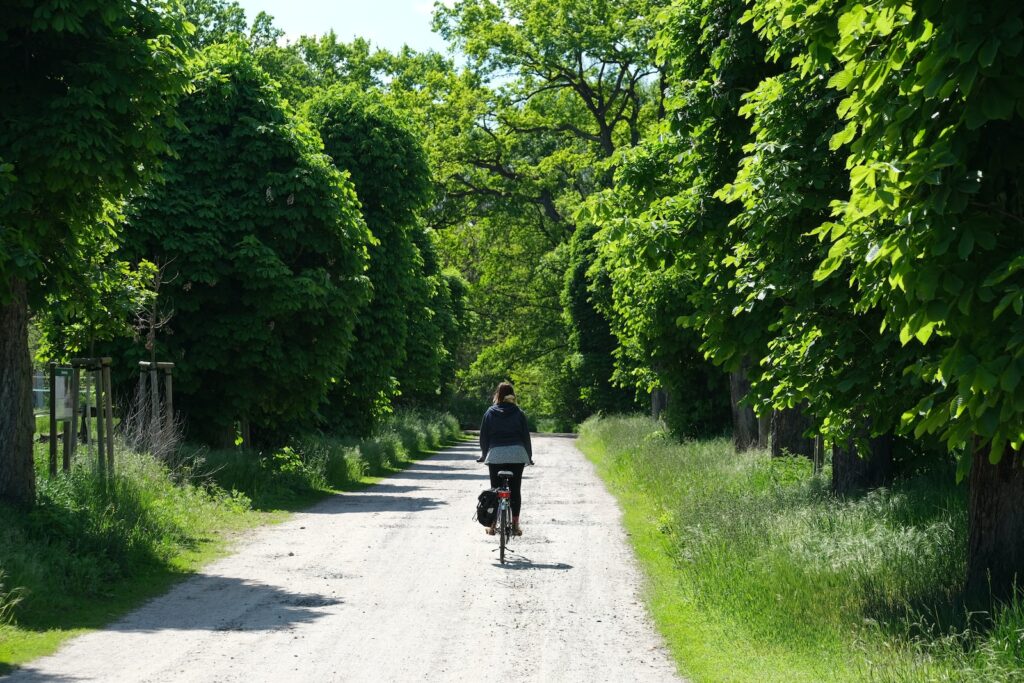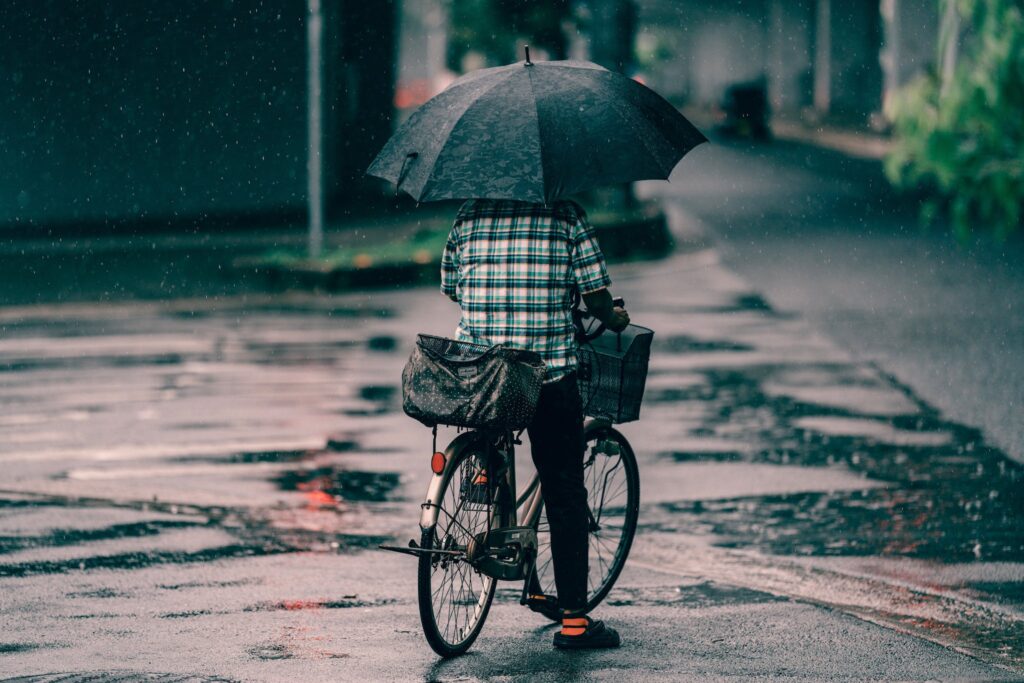56.4% of cyclists are happy with their winter gloves, according to our inquiry. But that leaves a staggering 28.2% who aren’t. Ever wondered why?
Once upon a time, I bought one pair of winter gloves for cycling that *looked* good. Good reviews, fair price, and I needed them. I discovered later that they could be good gloves for the winter in Spain, but not for where I live.
If you’re an avid cyclist, you know that your hands are the first to feel the cold, and if you don’t have the right gloves, you’ll be forced to cut your ride short. That’s why it’s important to choose the perfect winter gloves for biking that will prevent freezing your fingers and keep you warm.
When it comes to choosing the perfect winter gloves for biking, there are several factors to consider. First, you need to think about the temperature you’ll be riding in. If you’re going to be cycling in extremely cold temperatures, you’ll need gloves that are thick and insulated to keep your hands warm. On the other hand, if you’re going to be cycling in milder temperatures, you’ll need gloves that are less bulky and more breathable.
Table of Contents
Selecting the Right Gloves for Different Conditions
![[Buyers Guide] How to Choose The Perfect Winter Gloves for Biking That Prevent Freezing Your Fingers and Keep You Warm (2024) 3 a close up of a person riding a bike in the snow](https://theurbandoctor.com/wp-content/uploads/2023/12/94pf7kwidvg-edited.jpg)
When it comes to winter biking, selecting the right gloves is crucial to ensure that your fingers remain warm and comfortable. The gloves you choose should be able to protect your hands from the cold and wind while still allowing for flexibility and grip on the handlebars. Here are some tips for selecting gloves for different winter biking conditions.
Mild Winter: Fall and Spring Options
In mild winter conditions, fall and spring gloves are ideal. These gloves are designed to keep your hands warm in temperatures ranging from 4.44 °C to 15.56 °C (40 to 60 degrees Fahrenheit). They are usually lightweight, breathable, and moisture-wicking, making them perfect for mild weather conditions.
Fall and spring gloves are typically made from materials such as fleece, wool, or synthetic fabrics. They may also feature a windproof or water-resistant layer to protect your hands from the elements.
Severe Winter: Deep Winter and Sub-Zero Temperatures
For cold temperatures and deep winter riding, it is important to choose gloves that offer maximum protection against the cold. Deep winter gloves are designed to keep your hands warm in temperatures below freezing, usually ranging from -18 ªC to -6 ªC (0 to 20 degrees Fahrenheit).
These gloves are typically made from materials such as leather, Gore-Tex, or other high-performance fabrics. They may also feature insulation, such as down or synthetic materials, to provide extra warmth.
In addition to warmth, deep winter gloves should also be windproof and water-resistant to protect your hands from the elements. Gauntlet cuffs are also recommended to keep snow and wind from entering the gloves.
When selecting gloves for sub-zero temperatures, it is important to pay attention to the temperature range specified by the manufacturer. This will ensure that you choose gloves that are appropriate for the conditions you will be riding in.
By selecting the right gloves for the weather conditions, you can ensure that your winter biking experience is comfortable and enjoyable.
Key Features to Look for in Winter Cycling Gloves
![[Buyers Guide] How to Choose The Perfect Winter Gloves for Biking That Prevent Freezing Your Fingers and Keep You Warm (2024) 4 winter gloves for biking](https://theurbandoctor.com/wp-content/uploads/2023/12/h5caedoyqsc-edited.jpg)
When it comes to winter cycling gloves, there are several key features that cyclists should consider before making a purchase. These features include the material, insulation and thickness, weather and waterproof protection, touchscreen compatibility, sizing, and fit, and design features for optimal performance, durability, and ease of maintenance.
Material, Insulation, and Thickness for Warmth
One of the most important features to consider when purchasing winter cycling gloves is the material, insulation, and thickness. Gloves made from materials such as neoprene, fleece, or Gore-Tex are typically windproof and waterproof, providing maximum protection against the elements. Insulation and thickness are also important factors to consider, as they play a crucial role in keeping hands warm during cold weather.
Weather and Waterproof Protection
Another important feature to consider when purchasing winter cycling gloves is weather and waterproof protection. Gloves that are waterproof and windproof are essential for keeping hands dry and warm during wet weather conditions. Gloves with breathable materials can also help regulate body temperature and prevent excessive sweating.
Touch Screen Compatibility
Touch screen compatibility is becoming increasingly important for cyclists who use GPS devices or smartphones while riding. Gloves with touchscreen compatibility allow cyclists to use their devices without having to remove their gloves, providing added convenience and safety.
Sizing and Fit
Sizing and fit are crucial for ensuring that gloves provide maximum protection and comfort. Gloves that are too tight can restrict blood flow and cause discomfort, while gloves that are too loose can allow cold air to enter and reduce warmth. It is important to measure hand size and refer to sizing charts before purchasing gloves.
Design Features for Optimal Performance
Design features such as grip pads, reinforced palms, and adjustable cuffs can enhance the performance and comfort of winter cycling gloves. Grip pads provide added traction and control, while reinforced palms increase durability and reduce wear and tear. Adjustable cuffs allow cyclists to customize the fit and prevent cold air from entering.
Durability and Ease of Maintenance
Durability and ease of maintenance are important factors to consider when purchasing winter cycling gloves. Gloves that are durable and easy to maintain can provide long-lasting protection and save cyclists time and money. Gloves that can be easily washed and dried are also more hygienic and comfortable to wear.
Overall, when choosing winter cycling gloves, cyclists should prioritize features that protect hands from the elements, provide optimal performance and comfort, and are durable and easy to maintain.
Care and Maintenance of Winter Gloves
![[Buyers Guide] How to Choose The Perfect Winter Gloves for Biking That Prevent Freezing Your Fingers and Keep You Warm (2024) 5 f0fba8ff 32a7 4664 8fea afc979658927 edited](https://theurbandoctor.com/wp-content/uploads/2023/12/f0fba8ff-32a7-4664-8fea-afc979658927-edited.jpg)
Taking care of your winter gloves is crucial to ensure their longevity and performance. Here are some tips on how to maintain your gloves:
Cleaning
Keeping your gloves clean is important to prevent the buildup of dirt and sweat, which can cause odors and damage the material. Follow the care instructions provided by the manufacturer, as different materials may require different cleaning methods.
Generally, it is recommended to hand wash gloves in cold water with a mild detergent. Do not bleach or iron the gloves. After washing, gently squeeze out excess water and hang them to air dry. Avoid using a dryer or exposing them to direct sunlight or heat, as this can damage the material.
Storage
Proper storage is essential to maintain the shape and quality of your gloves. Store them in a dry place but away from direct sunlight or heat sources when not in use. Avoid folding or creasing the gloves, as this can damage the insulation and reduce their effectiveness.
Maintenance
Regular maintenance can help extend the life of your gloves and ensure their optimal performance. Check for any signs of wear and tear, such as holes or loose threads, and repair them promptly to prevent further damage.
To maintain the insulation, fluff the gloves after use to redistribute the insulation and prevent clumping. If the gloves become wet, remove them immediately and let them air dry. Do not use a heater or dryer to speed up the drying process, as this can cause damage to the material.
By following these simple care and maintenance tips, you can ensure that your winter gloves remain durable, perform well, and provide you with the warmth and protection you need during your winter biking adventures.
Pro Tip
Ergonomics and Hand Movement
Ergonomic design in cycling gloves is about aligning the glove’s structure with the natural position and movement of your hands. This alignment reduces hand fatigue, increases comfort, and improves control over your bike. During winter, when gloves are thicker and bulkier, this aspect becomes even more critical.
Key Ergonomic Features to Consider
- Pre-Curved Fingers: Look for gloves with pre-curved fingers that mimic the natural resting position of your hand. This design reduces the effort needed to grip the handlebars, thereby lessening hand fatigue.
- Padding and Cushioning: Adequate padding in the palm area can absorb vibrations from the bike, providing comfort on rough terrains. However, too much padding can reduce handlebar feel, so find a balance that suits your biking style.
- Flexibility: Gloves should allow for full finger movement without resistance. Flexibility is crucial for shifting gears, braking, and general handlebar manipulation. Test the gloves’ flexibility by making a fist and extending your fingers.
- Grip Enhancement: Look for gloves with textured surfaces or grip-enhancing materials on the fingers and palms. This feature is particularly beneficial in wet or icy conditions, where handlebar grip can be compromised.
- Adjustable Closures: Wrist closures that can be adjusted ensure a snug fit, keeping the gloves in place without restricting wrist movement. This feature also helps in insulating the hands by preventing cold air from entering the gloves.
While warmth is a priority, a glove that is too bulky can hinder your hand movement and control over the bike. Striking a balance between insulation and ergonomics is key.

![[Buyers Guide] How to Choose The Perfect Winter Gloves for Biking That Prevent Freezing Your Fingers and Keep You Warm (2024) 2 black motorcycle on gray concrete floor](https://theurbandoctor.com/wp-content/uploads/2023/12/v6p-rjm7k_g-1024x683.jpg)
![[Buyers Guide] How to Choose The Perfect Winter Gloves for Biking That Prevent Freezing Your Fingers and Keep You Warm (2024) 6 cropped Button w background](https://theurbandoctor.com/wp-content/uploads/2023/07/cropped-Button-w-background.png)





